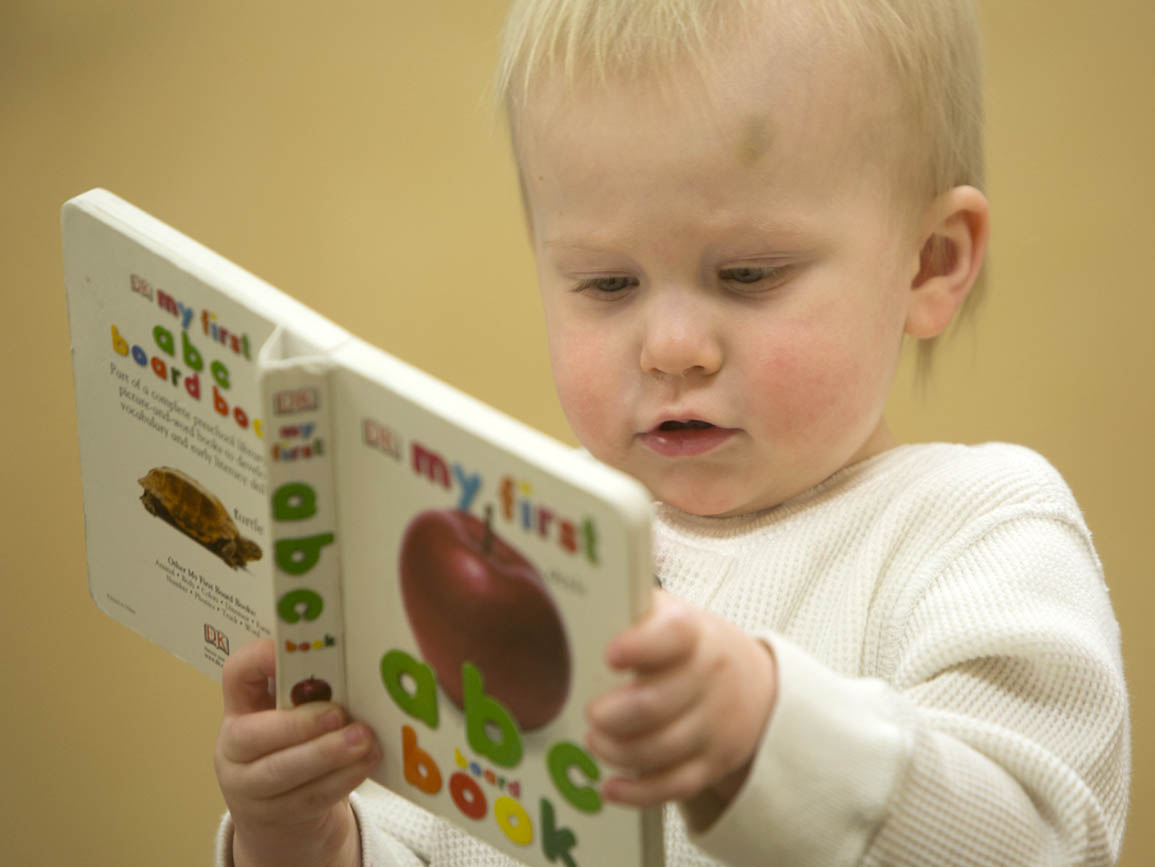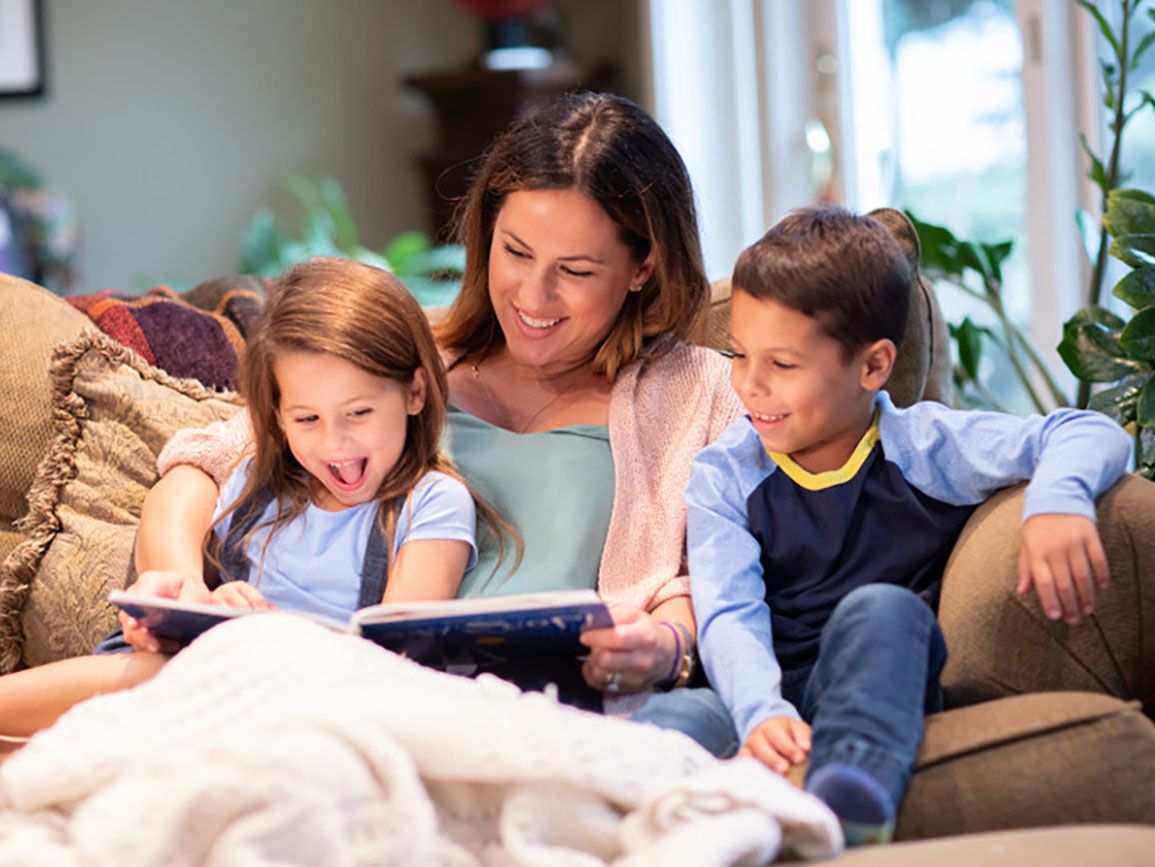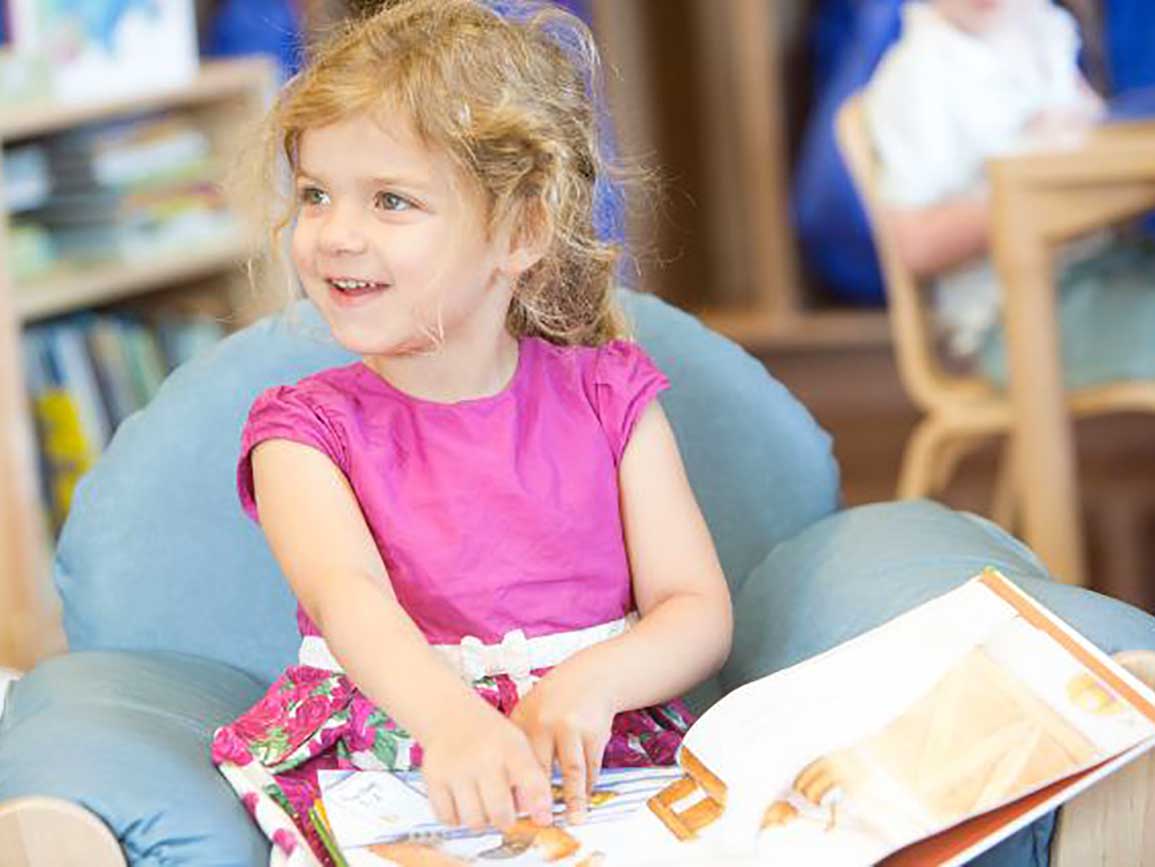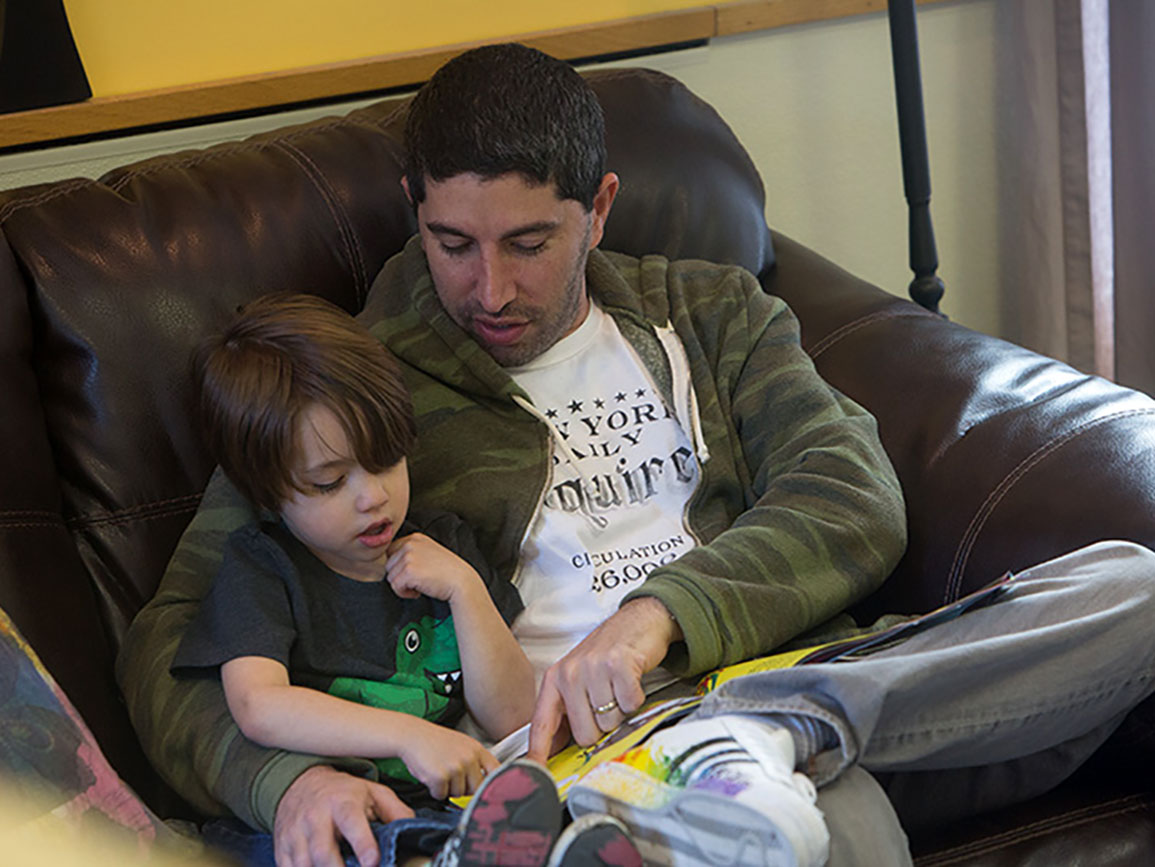Children’s early literacy starts with listening to the sounds in their world and experimenting with making sounds and words on their own. As a parent, you help your child develop literacy by creating opportunities for conversation and communication.
Talking, singing, playing, and reading books together all build the brain connections for language, literacy, and learning. The process for gaining literacy unfolds in a predictable sequence – babies and toddlers hear words, then say words; older children hear and see the written word before they read and write.
Infants
Babies’ brains are wired for language and communication. Talk with your baby, using the back-and-forth technique called serve and return. Sing, play, and read stories. Respond to your baby’s gestures, grunts, and attempts to communicate. Teach your baby a few signs, which have been shown to accelerate language development.
Toddlers
During their first two years, most children move from using single words and phrases to talking in short sentences. Talking and reading with your toddler every day has a lasting impact on language, social, and cognitive development. When children are read to frequently, they often recite key phrases or words from favorite books, which in turn, builds confidence and an interest in reading.
Preschool
Three- and 4-year-old children make huge strides in literacy. They begin to "read" their favorite books, focusing mostly on retelling the story from the pictures. They listen intently to add words and phrases to their growing vocabulary, and to learn grammatical rules. By asking lots of questions and experimenting with language, they evolve into active talkers. Some preschoolers are ready to read very simple books or write a few words.
Pre-kindergarten
By the age of 4 ½ to 5, a child's speaking vocabulary grows from a few hundred words to more than a thousand, and they understand many more than that. They are able to comprehend the complicated rules of grammar and syntax. Pre-kindergarteners can now participate in more elaborate conversations, use words to solve problems, and make up stories and songs on their own.
Kindergarten
Many children arrive at kindergarten with a rich vocabulary and an awareness of printed language. Most kindergartners are considered to be emergent readers. They thrive when exposed to literacy-rich environments and experiences.
School Age
Children's writing emerges rapidly in this period. As children become more proficient and language-aware writers, some go through a period of insisting on asking for conventional spellings. They are thirsty for language knowledge. This makes vocabulary development, reading, and pre-reading for comprehension, word awareness, spelling, and writing very important to their continual literacy development.In Our Classrooms
As early educators, we recognize both our responsibility to model inclusion for our young learners and our profound opportunity to make a real difference for the next generation.
- We work hard to create “places of belonging” where every child and family feels welcome. In our classrooms, you’ll find pictures of the children and their families, beautiful gender-neutral/culturally inclusive materials, and diverse picture books.
- We’ve built our curriculum to create culturally authentic learning environments that celebrate and explore all cultures and experiences. We use a mirrors (exploring a child’s own identity) and windows (understanding and embracing others) approach to learning.
- Our anti-racism and anti-bias curriculum and teacher training program are designed to support inclusive classrooms. We actively create a culture of acceptance and respect where we can ask questions and learn from each other.
- Our educator trainings and resource library include guidance to help teachers support and honor children of all abilities and needs.





